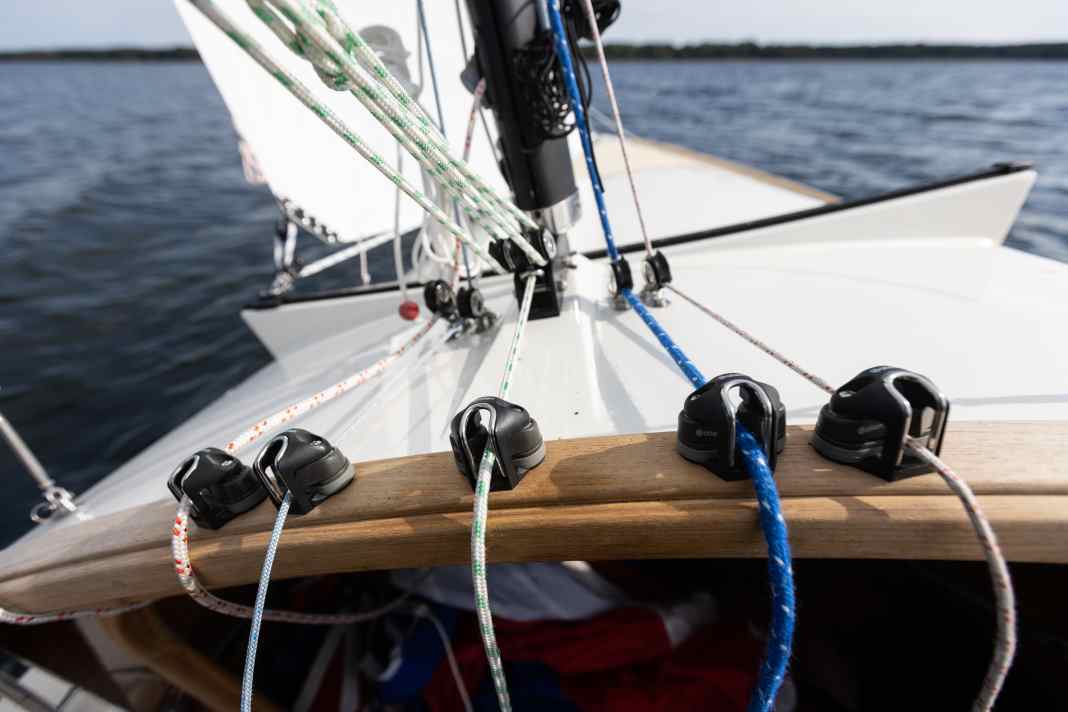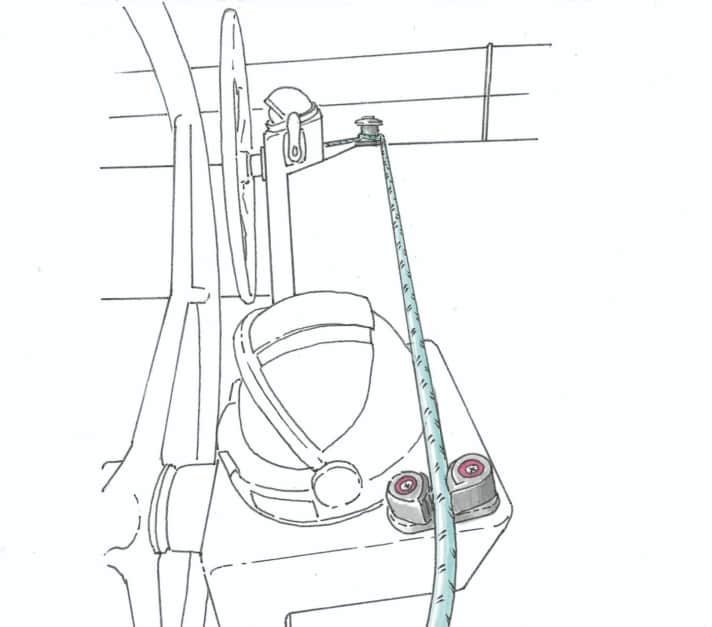





Terminal lifehack 1: Easier under gennaker with two curry clamps

Sailing single-handed or in pairs is significantly improved by minor modifications to the deck layout. We have made it easier to operate the gennaker on our 38-foot-long performance cruiser. Normally, its loaded leeward sheet is operated either with one of the halyard winches or with the leeward mainsheet winch (on a German Cupper system). At these points, however, the sheet is either difficult for the helmsman to reach or the windward shoulder of the gennaker cannot be observed at the same time. A simple curry cleat makes both of these things possible upwind. With the mainsheet disconnected, the gennaker sheet is laid around the aft winch and led to windward. There, the helmsman can ease the sheet in all conditions and, when there is less wind, can haul it tight without a crank. We mounted the clamps on top of the wheel pillars, where there was still enough space next to the compasses. To do this, we cut threads in the aluminium pillars and insulated them with Tef-Gel anti-corrosion paste.
Fridtjof Gunkel, 20251 Hamburg
Terminal lifehack 2: Winch handle as trim handle

Thin stretchers are difficult to tension by hand. Lines that are completely oversized are therefore often used to tension them. In order to bring even thin ropes to proper tension, we have screwed a Curry clamp onto one of our winch cranks, in which we can attach a rope. By gripping the crank to the left and right of the clamp, we can apply significantly more pulling force. It is important that the holes are not on the edge of the crank, otherwise there is a risk of it breaking when cranking.
Eike Köther, 28844 Weyhe
Terminal lifehack 3: Universal gripper threads traps through lever clamps

Although this topic has already been covered many times, here is another tip for conveniently threading traps through a lever clamp: We use a bendable gripper, the kind you can get at any DIY store for a few euros. Of course, the tool also provides other valuable services, for example to fish a lost screw out of the furthest corner of the engine compartment or to grab a cable. The only disadvantage of these flexible helpers is that they are not rustproof and therefore age quickly on board.
Wolfgang Majdic, 40724 Hilden
Terminal lifehack 4: Simply operate the dirk by the backstay

On our 20-foot small cruiser, the end of the keel is tied to a cleat on the mast. This meant that one person always had to go forwards to release or push it through. We were looking for a simple solution to operate the dirk from the cockpit: A comb cleat was attached to the backstay, in which the dirk deflected at the top is fixed. The clamp is attached to the backstay in two places: at the top with a screw and nut through the hole in the shroud tensioner, which is used to adjust the backstay tension; at the bottom with a cable tie behind the lock nut. The fastenings utilise the holes in the clamp.
Janosch, Riepenhusen, Stade
Do you have any advice for other sailors?
We will honour the publication of your lifehack with 50 euros. Please add photos or sketches. We also need your address so that we can send you a crossed cheque.
Submissions to: Editorial office YACHT, Gänsemarkt 24, 20354 Hamburg or: mail@yacht.de.
